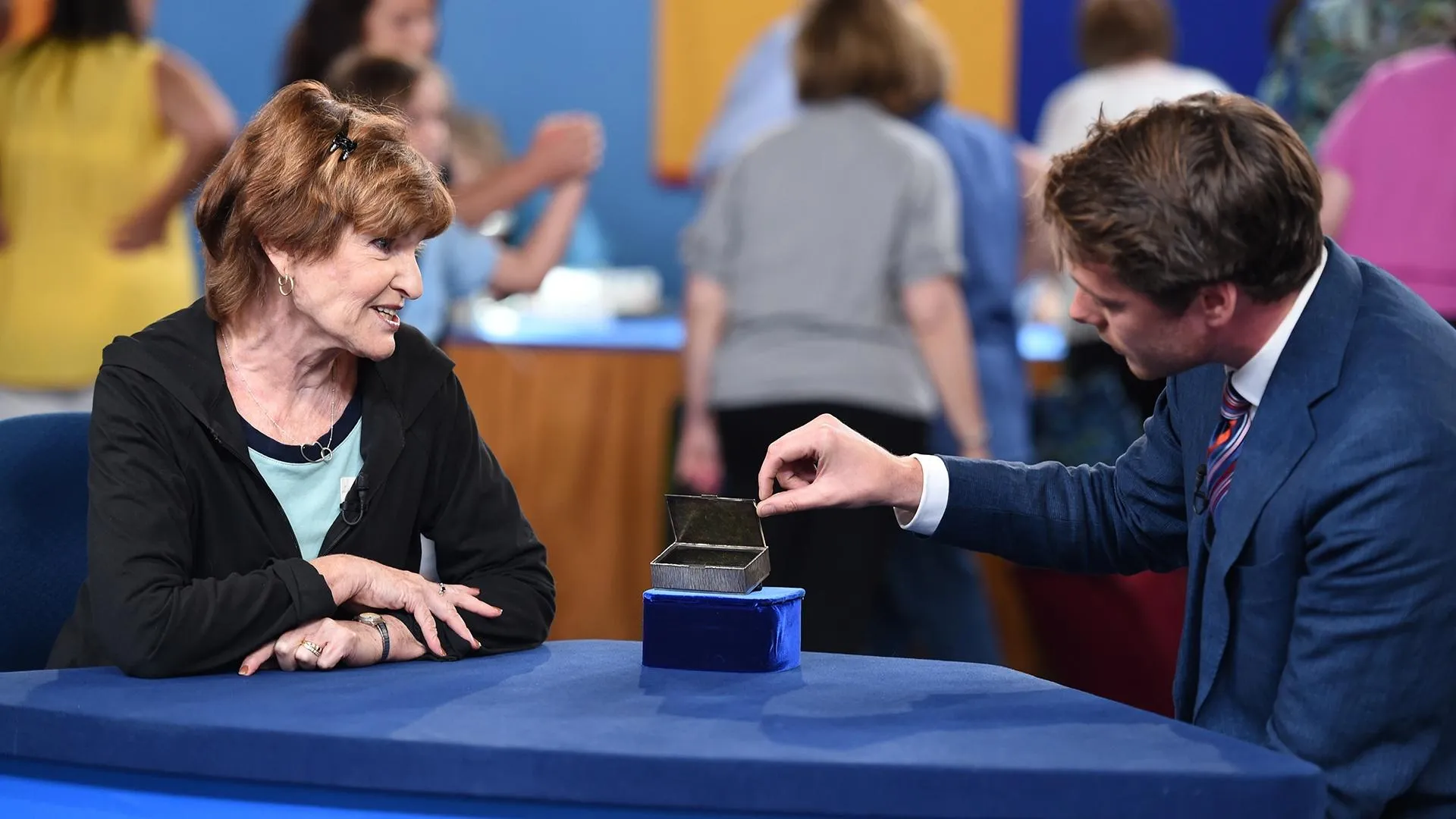GUEST: In 2001, my mom died, and I found this box in her safety deposit box. She was very frugal. She grew up poor, and then even though she wasn't so poor, she would go shopping in the Bronx, and my father would shop at Fifth Avenue. They traveled a lot through Europe, a lot to England. I would think he probably bought that box. I can't imagine her buying a box like that.
APPRAISER: So it's made in England.
GUEST: It is?
APPRAISER: Yes. It's an English silver box made by Gerald Benney.
GUEST: Okay.
APPRAISER: And he is considered one of the most important, celebrated craftsmen of the 20th century in England. And I think one of the things that really sets him apart is that he really started to sort of make in the '50s and '60s... His era is really defined by trying to find new ways to depart from existing styles. So he was really trying to forge new decorative schemes that really spoke about the period in which they were made. And I think to people who collect post-modern pieces, he's considered very important, and very important to the history of British design in general. At one time, he held up to four royal warrants, which means that he was a producer for the Queen in certain categories-- jewelry, silver, etcetera. So that, I think, is a real way of gauging how important he was and how fine his skill was as a craftsman.
GUEST: Mm-hmm.
APPRAISER: This particular box is silver with 18 karat gold knobs across the top. The decorative scheme on this actually became known within the trade as the Benney bark sort of technique, or Benney bark finish.
GUEST: Uh-huh.
APPRAISER: And that is this wonderful textured finish that we see here. Yeah. And he actually fell upon this particular finish sort of by accident. He was hammering a piece of silver out and he didn't notice that his hammer was broken, and he looked down at what he was hammering and it had these wonderful gouge marks in it, which sort of looked a bit like bark. Now, there are a series of marks on this. His name is written underneath, and also "Sterling" and "18K." And another really nice feature of this box is that it has also the radially finished underside. It's basically got everything that a collector of boxes-- and there are many of those-- would want to find. It's hallmarked 1972, it's got the date letter on it for 1972. He first started making boxes in the '60s. An identical box to this one recently sold in June 2014 at auction in London for 3,750 pounds, which would be around $6,000 at auction.
GUEST: Right, wow.
APPRAISER: I would estimate it at auction for anywhere between $5,000 to $7,000 to reflect that result.
GUEST: My mother would be turning in her grave with this. (laughing)











